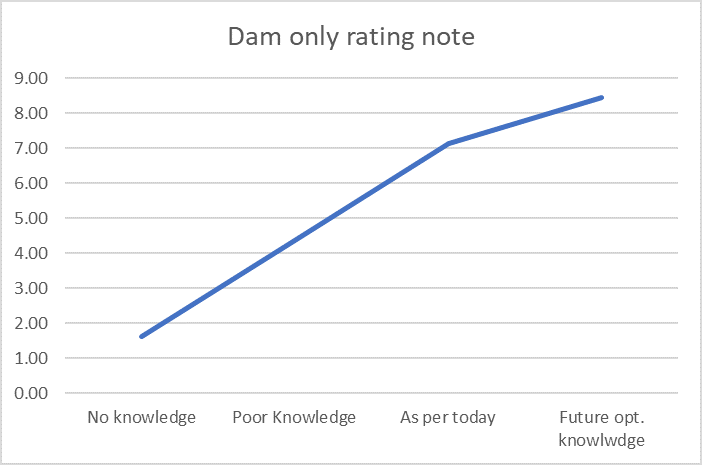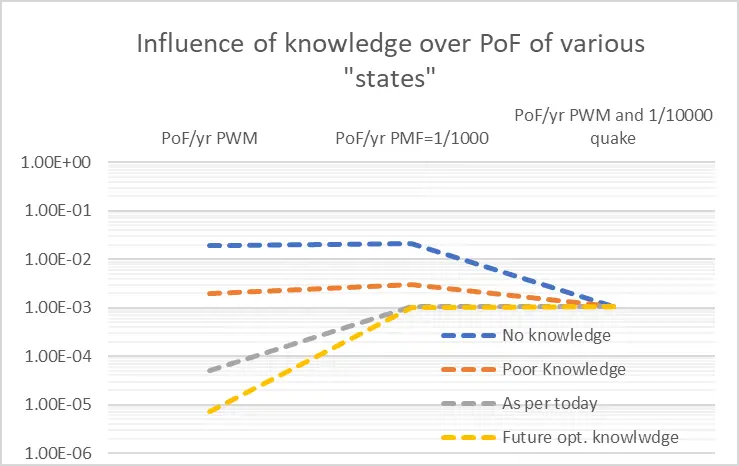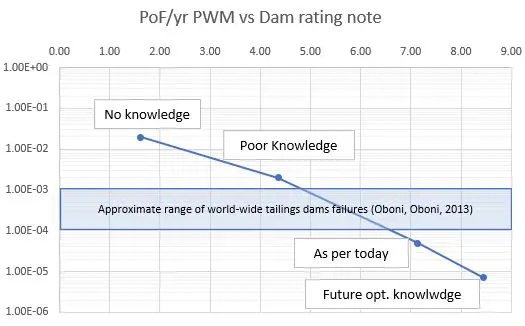Here is a case study: A client acquired a mining properties portfolio that includes dams at closed mines. Some of these structures were relatively well documented, while others were not. As a result, the client was facing important decisions, such as a way to enhance knowledge on the structures. The question the client asked us was: “What happens to a particular inactive dam if the level of knowledge we have goes from “no knowledge” to a future “optimum knowledge?” Can you characterize the knowledge/probability of failure relationship?”
ORE2_Tailings and Knowledge Level and Dam Monitoring Effects
In this case, we deployed ORE2_Tailings on the dam. At first, we derived the 30+ KPIs from the existing level of knowledge, using the Factor of Safety (FoS) of 1.5 that the engineers evaluated for the dam. Besides the dam being inactive, we made other assumptions and conditions we summarize below.
We then described the levels of knowledge which dictate the KPIs’ partial and progressive alterations as follows:
· No knowledge: encompasses only external observable symptoms
· Poor knowledge: as above, plus assumptions of “good behavior and engineering common practice” of prior owner
· Today’s knowledge: based on all information available today, including reports, monitoring results and discussions to date
· Future optimum knowledge: considers FoS be confirmed, and removing geotechnical uncertainties by additional studies
ORE2_Tailings Dam Ratings
ORE2_Tailings allows us to study causality of the potential failure. It also expresses a rating note. The rating note qualifies the overall quality of the structure and its management, maintenance, monitoring, etc. The minimum note is 0 and the maximum note is 10.
Of course, 0 and 10 are theoretical extremes. A site visit and discussions on site generally allows for a note of 1 or slightly above. That would have been the case for this dam if no information had been available. Aerial views (including Google Earth, a historical InSAR analysis, satellite optical imagery and NDVI) also can bring the knowledge level up, as we can use the aerial images to look back in time. IoT, big data and AI may be interesting additions to future knowledge, though dam failures are not frequent enough to allow machine learning.
The graph below shows how the dam rating evolves when knowledge level increases for the specific inactive dam we studied.



